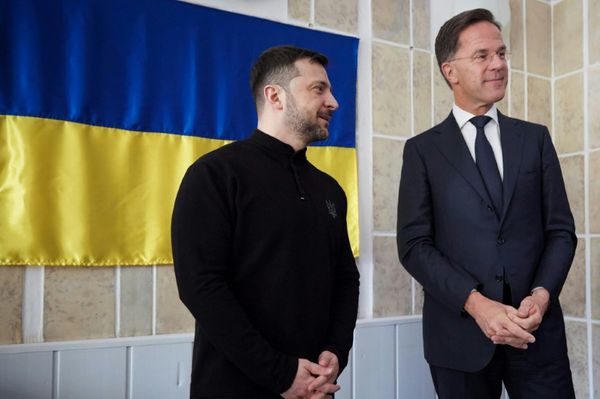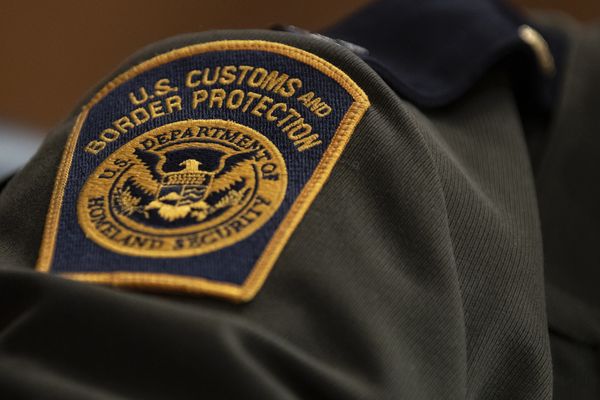
Israel’s defence minister has announced a major expansion of the Israeli ground assault on Gaza, promising to seize large areas of the Palestinian enclave and incorporate them into so-called “security” zones.
The announcement on Wednesday came as Israel’s military killed more than 50 Palestinians in attacks across Gaza, including one that targeted a UN clinic. Israel also continued a total blockade of the Strip for a 31st day, forcing all bakeries there to shut down.
In a statement, Defence Minister Israel Katz said Israeli troops would move to clear areas “of terrorists and infrastructure, and capture extensive territory that will be added to the State of Israel’s security areas”. He also called on Palestinians in Gaza to eliminate Hamas and free the remaining Israeli captives held in the territory, to end the war.
Katz, however, did not make clear how much land Israel intends to seize.
The Israeli military has already set up a significant buffer zone within Gaza, expanding an area that existed around the edges of the enclave before the war, and added a large area in the so-called Netzarim Corridor through the middle of the territory.
Later on Wednesday, Prime Minister Benjamin Netanyahu said Israeli forces would establish what he called the “Morag corridor” in Gaza.
“We are cutting up the Strip, and we are increasing the pressure step by step, so that they will give us our hostages,” Netanyahu said.
Israel’s renewed assault comes as part of a “maximum pressure” campaign aimed at forcing Hamas to renegotiate the ceasefire deal agreed upon in January. Netanyahu wants Hamas to release the 59 Israeli captives remaining in Gaza in exchange for Palestinians held in Israeli jails as well as humanitarian aid for Gaza, but without committing to ending the war and withdrawing troops from the enclave.
Hamas, however, has insisted on a return to the previously agreed deal and has offered to free all the captives at once in return for a permanent ceasefire.
Israel responded by resuming its bombardment of Gaza and has killed more than 1,000 Palestinians, mostly women and children, since March 18.
Gideon Levy, a columnist at the Israeli news outlet Haaretz, said he sees no end in sight to the bloodshed.
“Hamas will not give up because they have nothing to lose. And Israel cannot be stopped,” Levy told Al Jazeera. “We are in a situation of desperation. A war continues without any goal. The bludgeon continues without any purpose.”
Palestinians on the move again
On Monday, the Israeli military ordered all residents of Rafah in southern Gaza to flee, and on Tuesday, it expanded the forced displacement notices to Beit Hanoon, Beit Lahiya and nearby areas in the north of the enclave.
According to The Times of Israel, the military has deployed its 36th Division to Gaza for the expanded offensive, and the soldiers entered the Strip early on Wednesday morning.
Dozens of Palestinian families in the Khirbet al-Adas area of Rafah told Al Jazeera they have been trapped by the Israeli onslaught and have issued a distress call, appealing for international help to evacuate them to safety.
Palestinian medics said that Wednesday’s victims included 12 people killed when Israeli forces targeted a building in southern Khan Younis. At least 19 more, including nine children, were killed in an attack on a UN clinic in Jabalia, according to Gaza’s Health Ministry.
Al Jazeera’s Tareq Abu Azzoum, reporting from Deir el-Balah in central Gaza, said people in Rafah, where casualties were also reported, were fleeing with what little they could gather of their personal belongings. A year ago, the city, located on the Gaza border with Egypt, housed some 1.4 million people, including more than a million who had been displaced by Israeli attacks elsewhere in the enclave.
But Israel invaded the city in May, forcing nearly all of its population out. According to United Nations estimates, only 50,000 remained there by July.
Residents only started to come back after the Israeli military withdrew partially following the ceasefire in January.
“And now, people are on the move again. Knowing full well that nowhere is safe in Gaza,” Abu Azzoum said.
He noted media reports in the United States and Israel that said the Israeli military is aiming to capture about 25 percent of Gaza’s territory as part of its pressure campaign against Hamas.
“Many Palestinians believe this is only the beginning of the plan to carry out mass displacement of the population of the entire Gaza Strip into Egypt. This is something we’ve heard repeatedly from the Israeli prime minister and has been supported by the US,” he said. “The scope of these operations are concentrated in Rafah, the eastern part of Khan Younis and the central areas, as well as all border towns and villages located in northern Gaza,” he added.
‘Fleeing under gunfire’
The UN humanitarian agency (OCHA), meanwhile, said in a post on X that “tens of thousands of civilians are fleeing Rafah under gunfire”.
One elderly man told the agency that Israeli forces shot at him and other civilians as they fled.
“Some were injured and screaming, but I couldn’t look back out of fear,” he recounted in the video.
“I had nothing with me,” another woman said. “We left and climbed the sand dunes. We walked on. When I escaped, the [Israeli] tanks burned tents along the road.”
⚠️⚠️⚠️
Tens of thousands of civilians are fleeing Rafah under gunfire.#Gaza continues to be one of the most dangerous places in the world.
The entry of aid has been blocked for nearly a month. Humanitarians must be allowed to deliver assistance. pic.twitter.com/IqAJNboVsp
— UN Humanitarian (@UNOCHA) April 1, 2025
The renewed offensive has drawn criticism from within Israel, too.
The families of Israeli captives said they were “horrified to wake up” to the defence minister’s announcement.
“Has it been decided to sacrifice the hostages for the sake of ‘territorial gains’?” the group said in a statement.
“Instead of securing the release of the hostages through a deal and ending the war, the Israeli government is sending more soldiers into Gaza to fight in the same areas where battles have already taken place repeatedly,” it said. “The responsibility for the release of the 59 hostages held by Hamas lies with the Israeli government. Our grave concern is that this mission has been pushed to the bottom of its priorities and has become merely a secondary objective.”
Israel’s assault also comes as all bakeries in Gaza closed down, citing shortages of flour and cooking gas, one month on from the Israeli blockade. These include 25 bakeries run by the World Food Programme.
Hamas, in a statement on Wednesday, said the hunger crisis in Gaza has reached a “famine phase”.
Israel bears full responsibility for the “catastrophic human consequences increasing by the hour”, the group added, noting that no food, water, fuel or medicine has entered the Strip since Israel imposed a total blockade on March 2.
The UN has also appealed for an end to the siege and a return to the ceasefire.
Stephane Dujarric, a spokesperson for the body, also dismissed Israeli claims there was enough food in Gaza as “ridiculous”.
“We are at the tail end of our supplies that came in through the humanitarian route … You know, the WFP doesn’t close its bakeries for fun.”
“[During the ceasefire,] we saw humanitarian aid flood Gaza. We saw markets come back to life. We saw prices going down. We saw hostages released. We saw Palestinian detainees released. We need to go back to that,” Dujarric said.







